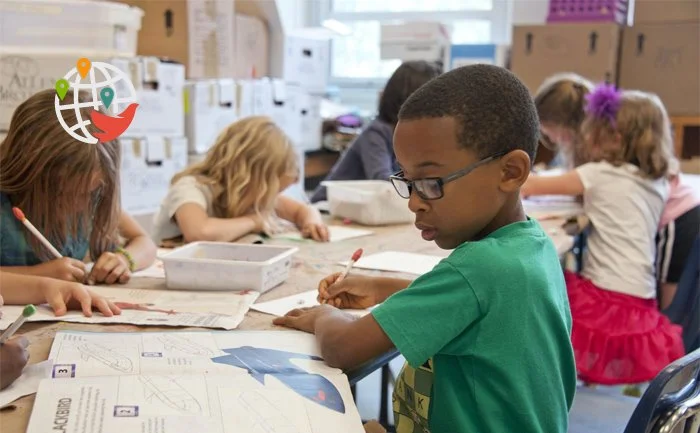School years in Canada

Canada has a high-quality education. What is the education system like and how can immigrant children attend Canadian schools?
Education is a top priority for the Canadian government, and its quality is considered one of the highest in the world. This is one of the reasons why many parents who want to move to another country choose Canada.
Kindergartens
Most Canadian children attend kindergarten at the age of 4 or 5. Preschool education is compulsory only in New Brunswick and Nova Scotia, in the other provinces the choice is left to the parents. As a rule, families still prefer their children to attend kindergarten to be able to work.
Kindergartens can be public, private, or federal. In most provinces, the first year is always free, in some, it is two years, for example, this option is offered by Quebec for low-income families and children with medical conditions.
In kindergartens, young Canadians learn how to communicate with each other, as well as the alphabet, counting, and reading.
Primary school
The school years, depending on the province, begin in first grade, which children enter at age 6 or 7. Attending school is compulsory. Primary school lasts until the age of 11 or 12.
In most Canadian primary schools, one teacher teaches all subjects, and children study in one classroom. Subjects include math, reading, English (French in Quebec), history, science, music, social studies, physical education, and art.
High school
Further education can be divided into two types: junior high school (incomplete secondary education) and high school (complete secondary education).
Junior high school includes seventh and eighth grades. This stage helps students prepare for further study. High school education ends in the eleventh or twelfth grade, depending on the province. Students are 16 to 17 years old at this point.
Regardless of the number of grades or the enrollment age, a Canadian must attend school until the age of 16. In New Brunswick and Ontario, the law requires a student to attend school until the age of 18, or until they receive a high school diploma.
Canada has a curriculum that helps children prepare for higher education. Some provinces even offer high school-based vocational training.
Paid and free schools
Statistics show that children in 95% of Canadian families attend public schools. Canada spends more money on education than any other G8 country. Students in public Canadian schools often finish in the top ranks on standardized tests, and Canada's high school diplomas are internationally recognized.
Education for immigrants
Canadian public schools have been accepting immigrants since the 1980s. Children of foreign nationals with permanent residency attend schools under the same conditions as Canadians.
For those who have not yet moved to Canada, there are residential programs for children with Canadian families, as well as opportunities to learn English as a foreign language in schools. Most public schools in the country accept students from abroad both for full-time education and for short-term (a week, a month) and annual programs.





























